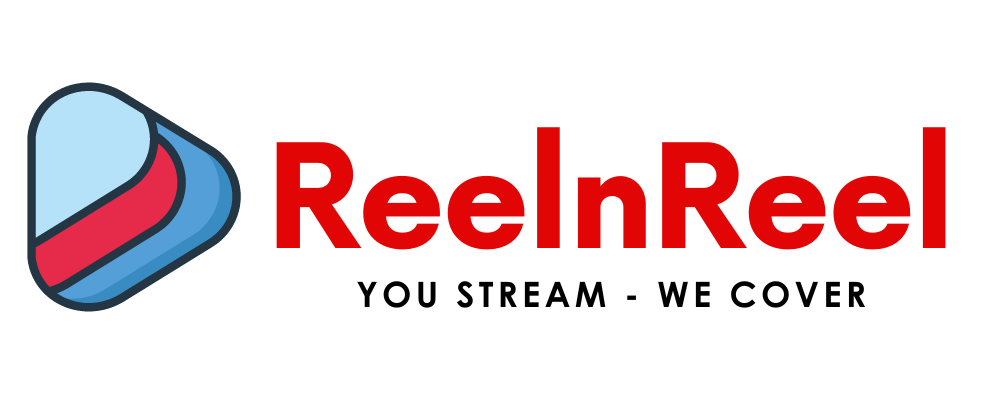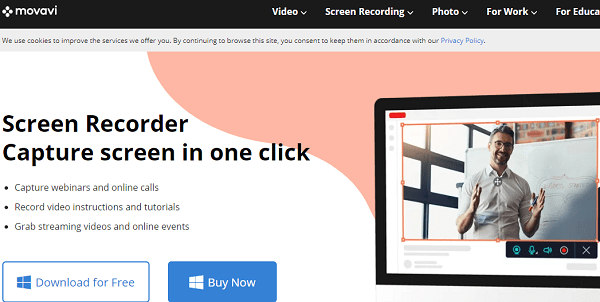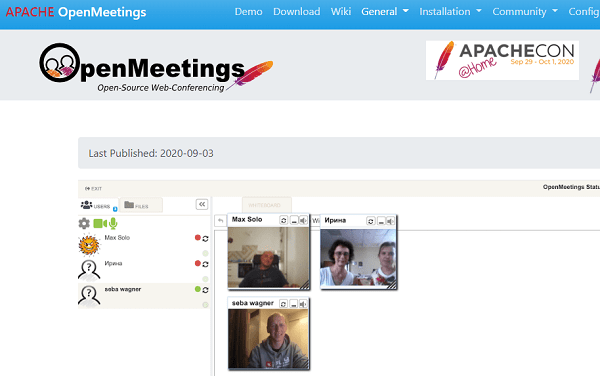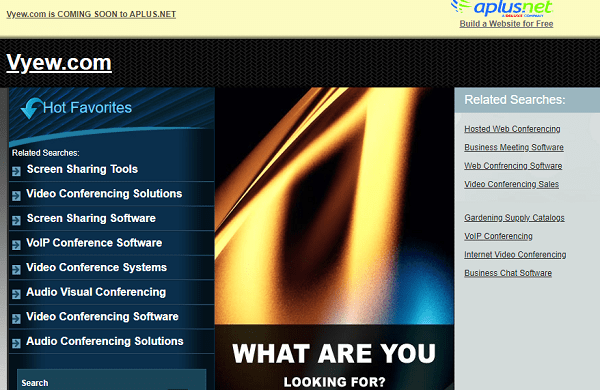Webinar Marketing is the most significant lead generation and sales-driving factor for B2B businesses, and many B2C consumer brands are using it to blow their marketing efforts. In this COVID19 Pandemic, the entire global market turned towards using webinar recording that helps launch a virtual environment where sales meetings and in-person events will be held. The most significant way businesses connect with users is through webinar recording software.
The launch of webinars helps businesses hold audience engagement effectively, and it can be used to respond immediately to customers or participants.
Any business should find the best webinar recording software to engage and influence the audience effectively.
Unlike other conferencing tools, webinar software is the most powerful tool over the internet to conduct workshops, seminars, conventions, and presentations through which businesses can reach a broader range of audiences at a time.
Webinar Recording Software
Webinar Recording: ezTalks Webinar
ezTalks is an automated video conferencing and web conferencing tool that provides on-premise and cloud software with essential features like HD video chat, screen sharing, whiteboard, IM and record, etc.
Moreover, users can enjoy high-quality video conference components that provide an excellent meeting experience.
Simply by using this, one can host simple meetings more collaboratively.
It offers several free slideshows, presentations, videos, audio, etc., for 10,000 participants.
It is simple to set up and helps launch the flawless video and audio experience.
Webinar Recording: Movavi Screen Capture
When businesses want to record that all from the screen, the only solution is Movavi Screen Capture; after running this program, you can capture the screen through which you can create video tutorials, record video calls, and video games, and save the web content you want to save to watch later.
It offers user-friendly options for consumers, from adjustment to changing the capture size.
It is a fully customized tool that enables you to select video output formats and additional recordings.
Moreover, the online sharing of the recordings can also be done through which video conversion into media format is possible.
Webinar Recording: AnyMeeting
It is a full-stack web conferencing, video conferencing, webinar, and online meeting tool.
This is the simplest-to-find experience on desktops and mobiles through which one can find the most reliable free online meetings anywhere.
By integrating HD video, audio, artificial intelligence, and collaboration tools, businesses can immerse the faster, more innovative, actionable, and most engaging meeting experience.
Small and mid-sized businesses can use this tool in all industries, like professional services, real estate, financial services, health care, etc. It is an expert tool for remote workforces.
Webinar Recording: OpenMeetings
The open-source browser-based tool enables businesses to build conferences over the web.
Using this tool, the users can access the microphone, share documents on a whiteboard, use a webcam, share the screen, record meetings, discuss over the chat, etc.
One can host the webinars by downloading and installing this hosted service on your server.
It is also a web conferencing tool that business teams can use to launch online training sessions, web conferencing, document editing, whiteboard drawing, screen sharing, etc.
Webinar Recording: View
It is a cloud-based web conference tool for small, mid-sized, and large-scale businesses.
ITQlick team has rated 3.8, and the cost of this tool is most affordable for everyone to access.
Moreover, it provides full-packed features that can impress all business brands.
The businesses can run it on a web browser, and this tool is compatible with Mac OS, Linux, and Windows operating systems.
It provides business hours support and online support for the customers.
This tool offers excellent features like chat or messaging, calendar management, document management, task management, project management, real-time editing, version control, content management, and version control.
Top five tips for recording a high-quality webinar presentation
- Decide on the length of the recording
- Work on the slide deck
- Manage sound and image quality
- Test out your presentation
- Get comfortable with public speaking
Starting recording when I log into the system
Set up a ringtone for clients to know when the recording starts
Have one mic and a backup mic that you pick up if needed
You can use webinars in many ways to engage your audience and sell more of your products.
- Host it
- Promote it
- Record it
- Use the recorded webinar
- Send it out to your network
Webinar Recording Uses, Benefits, and Tips
- Make a list of what you can use webinar recordings for
- Always choose a way to record it and maintain good tools
- Get the most out of each recording by doing these things
- Use webinar recording during the live session
- Keep a record of each session
- Sell to others (webinar recording is digital assets)
- Publish (blog, podcast, etc.)
- Host podcast or video series
- To save webinar
- To improve your webinars
- To analyze your videos
- Create your own paid webinar course
- Educate followers through webinars
- Download to sell on Shopify
- Share presentations and speeches
- Capturing online demonstrations
- Conferences, seminars, and education purposes
- Tutorials and how-to’s
- Make sure the audio is clear
- Record in a well-lit room
- Use a phone from far away
- Record the webinar on several phones
- Listen to the recording before it goes out
- Do Dry Runs
- Invite attendees to register for a recording session
- Use as an opportunity to upsell your services
- It saves you time and money as opposed to live webinars
- To collect b2b email leads
- To increase webinar attendance
- To build thought leadership
- Archive recordings online
- Convert them into PDFs
- Remove irrelevant content
- Share via email and social media
- Sell your replay
- Offer group coaching
- Use as an add-on for 2nd product launch
- Give away on different platforms
- Record a video of your product unboxing
- Create a video to show how your service works
- Turn the video into an infographic
Wrap-Up
Several paid and free webinar recording software are available in the market. Still, all will not provide similar features created to serve the users or businesses similarly.
Of course, from the list of webinars recording software, which one best suits your business?
Are you worried about it? Of course, well are confused about picking the best one that works effectively through which we can reach many audiences.
The nudge of creating simple professional videos is rising, giving tough competition to business brands to establish a connection with the audience.
Frequently Asked Questions (FAQs)
What is a webinar recording?
A webinar recording is a saved version of a live webinar session, allowing viewers to watch it later on-demand or use it for marketing, training, or content repurposing.
Why should I record my webinars?
Recording webinars helps you reach a wider audience, provide on-demand content, repurpose material for marketing, and archive valuable sessions for future reference.
What are the best tools to record webinars?
Top tools include Zoom, GoToWebinar, Webex, Microsoft Teams, Google Meet (with extensions), and OBS Studio for advanced recording.
Can I record a webinar as an attendee?
Only if the host allows it or if you use third-party screen recording software (ensure it complies with privacy and copyright policies).
Do most webinar platforms offer built-in recording features?
Yes, popular platforms like Zoom, GoToWebinar, and Webex provide built-in options to record sessions in the cloud or locally.
What format are webinar recordings usually saved in?
Most platforms save recordings in MP4 format, which is widely compatible with editing tools and video players.
How can I share a recorded webinar with my audience?
You can upload it to YouTube, Vimeo, your website, LMS platforms, or share the cloud recording link via email or social media.
Can I edit my recorded webinar?
Yes, you can use editing tools like Camtasia, Adobe Premiere, iMovie, or online editors like Kapwing and Clipchamp to trim, enhance, and repackage the content.
Is it possible to repurpose webinar recordings into other content formats?
Absolutely. You can turn recordings into blog posts, social media clips, podcasts, eBooks, lead magnets, or training modules.
How long should I keep webinar recordings available?
It depends on the content strategy. For evergreen topics, keep them accessible long-term. For time-sensitive topics, archive them after a few weeks.
Can webinar recordings be monetized?
Yes. You can sell access, bundle them as part of a course, or offer them as gated lead magnets in exchange for email signups.
What’s the best resolution for recording a webinar?
Record in at least 720p (HD). For professional-quality replays, aim for 1080p if your bandwidth and platform support it.
Should I inform participants that the webinar is being recorded?
Yes. Always disclose that the session is being recorded, ideally in both registration emails and at the beginning of the session.
Can I use a webinar recording as an evergreen webinar?
Yes. You can automate the playback using platforms like EverWebinar, StealthSeminar, or Vimeo + registration pages for lead generation.
What are the benefits of recording internal webinars?
Internal recordings serve as documentation, help onboard new employees, support compliance training, and allow absent team members to catch up.
How can I improve the quality of my webinar recordings?
Use a good microphone and camera, strong lighting, a clutter-free background, stable internet, and record in a quiet environment.
Where should I store my recorded webinars?
Store them on cloud storage (Google Drive, Dropbox), webinar platforms (Zoom cloud), or video hosting services (Vimeo, Wistia).
How can I add captions or subtitles to recorded webinars?
Use tools like YouTube’s auto-captioning, Rev.com, Descript, or Kapwing to add accurate subtitles and enhance accessibility.
Are recorded webinars effective for lead generation?
Yes. You can gate access behind lead forms or landing pages and continue collecting leads long after the live session ends.
What’s the ideal length of a recorded webinar for replay?
Keep replays between 30–60 minutes for optimal viewer retention, and consider trimming Q&A or dead air for a smoother experience.








